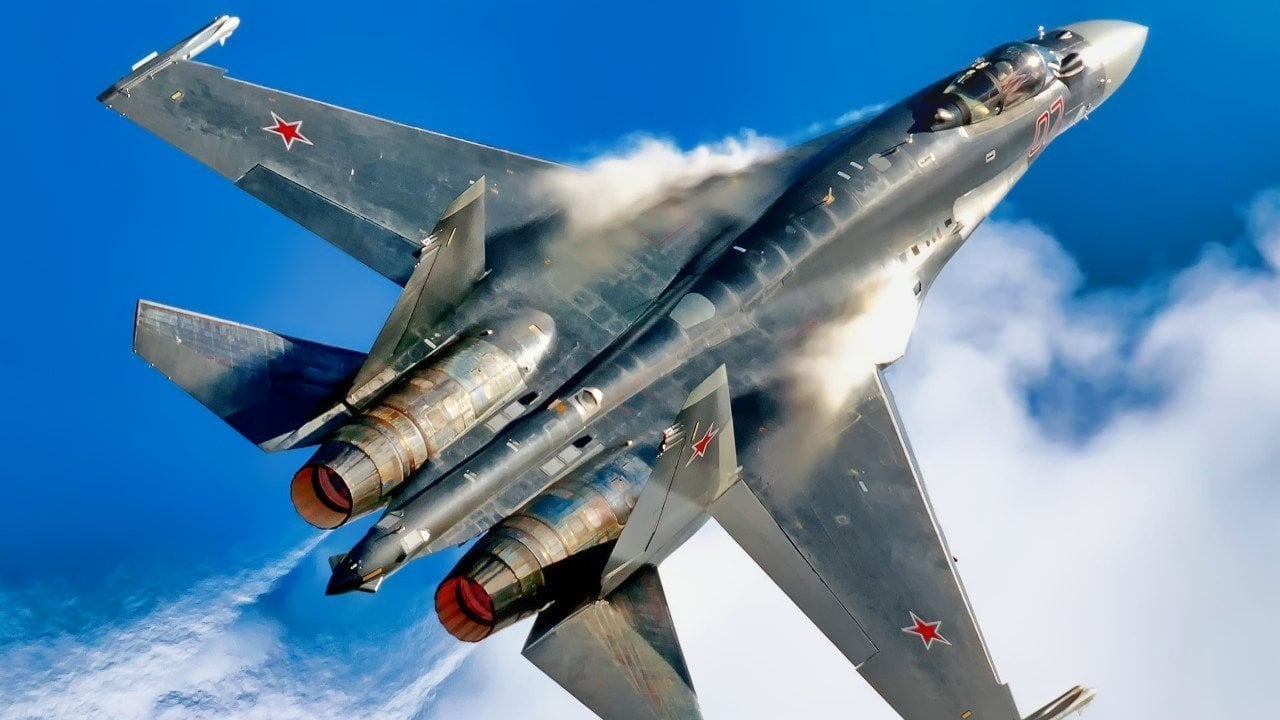SOURCE: RAUNAK KUNDE / NEWS BEAT / IDRW.ORG

In the realm of modern military aviation, the Su-35 stands as a pinnacle of technological prowess and combat capability. As the Director of the Gagarin Aviation Plant in Komsomolsk-on-Amur proudly asserts, this formidable aircraft, part of the United Aircraft Corporation within the state tech giant Rostec, is poised to impress India as it vies for the nation’s MRFA tender for 114 jets.
With a maximum take-off weight of 34.5 metric tons and a blistering top speed of 2,500 km/h, the Su-35 embodies speed, agility, and power. Its operational range of 1,500-4,500 km and service ceiling of 20,000 meters ensure versatility and adaptability across a spectrum of mission profiles.
What truly sets the Su-35 apart, however, is its armament and avionics suite. Capable of employing an extensive array of air-to-air and air-to-surface missiles, including precision weapons, the Su-35 is a force multiplier in any theatre of operations. Its 30mm GSh-30-1 gun, coupled with short, medium, and long-range missiles, as well as anti-ship missiles, ensures dominance in both aerial combat and ground strike missions.
At the heart of its combat effectiveness lies the IUS-35 information and control system, seamlessly integrating sensors, weapons, and data to provide unparalleled situational awareness and decision-making capability. The Su-35’s phased array radar further enhances its lethality, detecting targets at ranges of 100 km-400 km with precision and reliability.
However, the IAF already operates a formidable force – the Su-30MKI, an Indian variant of the Su-35 family. Defense Analyst Ranesh Rajan highlights that the Su-30MKI, often considered an “Indian Super-30” with advanced Indian systems, might soon receive an upgrade, making it one of the most advanced variants of the Flanker series. This existing fleet could make the IAF less inclined to consider the base Su-35 model.
The Su-35 faces stiff competition from other contenders vying for the MRFA contract. India’s decision will likely hinge on a careful assessment of each aircraft’s capabilities, cost-effectiveness, and compatibility with existing infrastructure and systems.
NOTE : Article cannot be reproduced without written permission of idrw.org in any form even for YouTube Videos to avoid Copy right strikes. Websites doing illegal reproductions will get DMCA and Legal Notices.